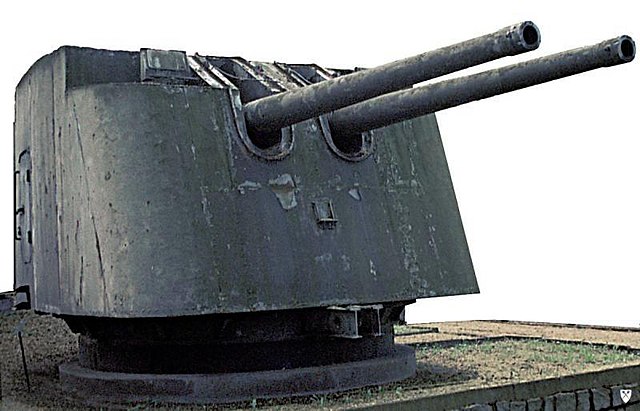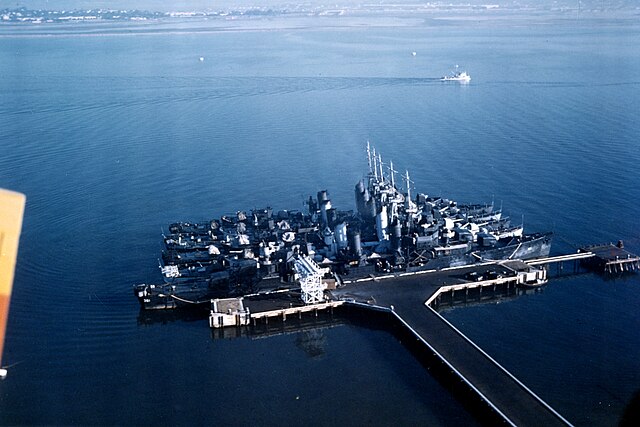The Tashkent class consisted of a single destroyer leader, built in Italy for the Soviet Navy just before World War II. Three others were ordered from shipyards in the Soviet Union, but they were cancelled before they were laid down as they were too difficult to build with the existing technology in Soviet shipyards. Completed in 1939, Tashkent participated in the Sieges of Odessa and Sevastopol in 1941–1942, during which she ferried reinforcements and supplies into those cities, evacuated wounded and refugees, and provided naval gunfire support for Soviet troops. The ship was badly damaged twice by Axis bombers before she was sunk in the harbor in mid-1942. Her wreck refloated in 1944, but it was too badly damaged to be worth repairing and was scrapped after the war.
Tashkent on her builder's sea trials, 1937
A B-2LM turret from the Polish destroyer Wicher
Right elevation
Plan
A flotilla leader was a warship of late 19th century and early 20th century navies suitable for commanding a flotilla of destroyers or other small warships, typically a small cruiser or a large destroyer. The flotilla leader provided space, equipment and staff for the flotilla commodore, including a wireless room, senior engineering and gunnery officers, and administrative staff to support the officers. Originally, older light or scout cruisers were often used, but in the early 1900s, the rapidly increasing speed of new destroyer designs meant that such vessels could no longer keep pace with their charges. Accordingly, large destroyer designs were produced for use as leaders.
Dubrovnik, a large destroyer design built as a flotilla leader
Ships of US Destroyer Squadron 3 at San Diego in 1941, with the visibly larger Porter-class flotilla leader USS Clark in front






